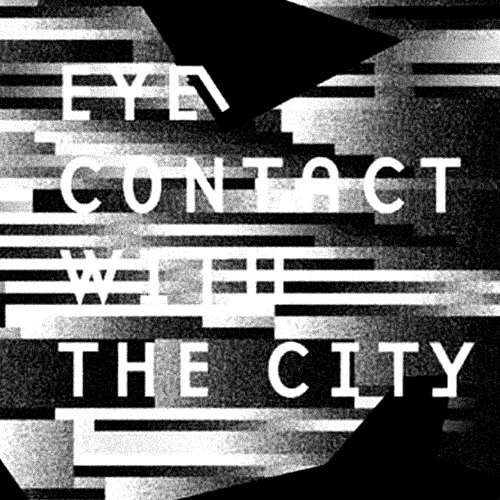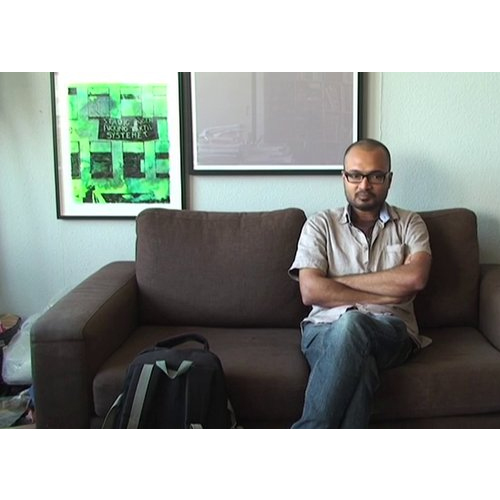Elegy for Bangalore*
BUDHADITYA CHATTOPADHYAY
(Gruenrekorder 2013)
Review by Maria Papadomanolaki
Birthed out of an art residency in Bangalore in the autumn of 2010, Elegy for Bangalore is another incarnation of Budhaditya Chattopadhyay’ s engagement with emerging urban environments in India. Departing from a sound/video installation entitled Eye Contact With The City (2011, Honorable Mention, Prix Ars Electronica), the 55:49 minutes of the work dwell on the concept of a meditative and in-depth observation … that reshapes memory associations disconnected and erased during the course of time as Chattopadhyay explains. A vast and extensive pool of materials was built in a period of six months while the piece took its final form during a subsequent artists’ residency at the School of Music, Bangor University, in the summer-autumn of 2011. A constituent element for accessing this particular work is “expanded” listening. Not only because of its durational nature but also due to the artist’s deliberate stratification and framing of the piece. In Elegy for Bangalore the theme of a construction site permutates endlessly in a contemplative-poetic mood of elegiac pace. And that is according to Budhaditya Chattopadhyay more than a compositional strategy, it is in fact a multi-layered listening methodology, necessary to accomplish the in-depth perception of the spatiotemporal implications of the city in metamorphosis.
And is indeed this notion of change manifested in terms of presence and absence, distance and proximity that can be also found in other works of Budhaditya. It is by no means an accident that the artist makes use of the words meditative, poetic and elegiac when referring to the sincere intentions of this work. With a background in film-sound studies and a keen interest in the textural properties sound and the detailed framing of a locale, Budhaditya Chattopadhyay manages to create an immersive experience that to him does not limit itself in what could perhaps be called a field-recording composition. In an interview for the publication entitled In the Field, Budhaditya sites that his involvement with sound is more informed by works of Tarkovsky, Lygeti or Bach than the obvious references to Francisco López or Chris Watson. The sounds in Elegy for Bangalore explore the memory of a place, the interplay between “frozen history zones” captured in discarded spools of tape and sites of urban growth, audibility and inaudibility, musicality and spatial historicity.
Amidst the surrounding surgical frequencies of the machinery, the urban skin and bones being repurposed and the resampled tapes found in flea markets, one can find the intent to meditate on and to investigate the amorphous urban development that certifies uniformity and grading of roots and memories. Beyond the conventions of the listening “I” tied to sound art, this work offers a cinematic walk through the different alleys, neighbourhoods, voices and lives of Bangalore at the moment of being crushed by machines, vehicles, grinding saws, workers at enormous metro-rail construction sites. At times through a ground-level mise-en-scène and at times from a solar position, the work observes, detached from what’s taking place. Slowness and indolence are key points for listening to this work. We gradually immerse in our journey through the city, we focus on its echoing details in long exposure, experiencing its heavy breathing, layer after layer, in a state of slow and gradual decomposition. The field recordings, one of the three layers composing the work, are, to Chattopadhyay’ s words, intensive and inclusive of the phenomenological experience of listening and recording at various locations in the city. The industrial drones form the quintessential continuo and the repurposed tapes provide insight to the city’s auditory legacy and endangered idleness. If anything, Elegy for Bangalore offers a beautiful reflection on a city that can only be imagined. More than an elegy, the work evokes a watchful solar eye (and ear), looking (and listening) over the bigger scheme where urban growth supersedes the natural and the collective. Yet, although the sun can be easily hidden it can hardly be drilled or cemented.
* from installation ‘Eye contact with the city’
[Budhaditya Chattopadhyay; photo courtesy of Frans Jacobi]



